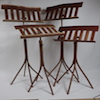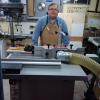Been looking at getting a Moulder for having the ability to make my own crown, light rail, bolection moulding and the occasional job for mitered doors. Will a W&H do this? The largest crown that I would make is 6.5” or so. I am ok with machining in multiple passes.




 Reply With Quote
Reply With Quote


